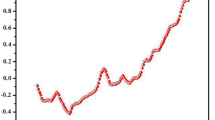Abstract
Instrumentation used to measure characteristics of fine particles entrained in gas or suspended in aerosols provides information needed to develop valid regulations for emission sources and to support the design of control technologies. This case study offers a brief history of “micromeritics,” a term used by early researchers to describe the science of small particles, and the related invention of laboratory instruments for characterizing very fine particles. The historical view provides insights into the role that Progressive Era government agencies played in advancing esoteric science and applying this knowledge to the regulation of workplace air pollution. Micromeritics instrumentation developed in conjunction with federal research now has many commercial applications worldwide, with characterizing airborne pollutants only a minor one. However, the continuing advances in the micromeritics field provide important laboratory measurement capabilities to environmental research organizations, such as the National Institute for Occupational Safety and Health (NIOSH).
Similar content being viewed by others
References
Bloomfield, J. J.: 1939,‘Industrial Hygiene – Retrospect and Prospect’, address of Chairman of the Industrial Hygiene Section, American Public Health Association, presented at the Association’s 68th Annual Meeting, October 17, 1939, reprinted in American Journal of Public Health 29, 1215–1224.
Brown, D. M., Wilson, M. R., MacNee, W., Stone, V. and Donaldson, K.: 2001,‘Size-dependent proinflammatory effects of ultrafine polystyrene particles: A role for surface area and oxidative stress in the enhanced activity of ultrafines’, Toxicol. Appl. Pharmacol. 175, 191–199.
Cralley, L. J.: 1996,‘Industrial hygiene in the U.S. Public Health Service (1914–1968)’, Applied Occupational and Environmental Hygiene, Vol. 11, no. 3.
DallaValle, J. M.: 1930,‘Studies in the Design of Exhaust Hoods’, Doctoral Dissertation, Harvard Archives, HU 90.2194 Harvard Depository.
DallaValle, J. M.: 1943, Micromeritics: The Technology of Fine Particles, Pitman Publishing, New York.
DallaValle, J. M.: 1948, Micromeritics: The Technology of Fine Particles, 2nd ed., Pitman Publishing, New York.
DallaValle, J. M.: 1949,‘Development of a Micromeritics Laboratory’, Final Report for Engineering Experiment Station, Georgia Institute of Technology, Georgia Tech Archives.
DallaValle, J. M.: 1952, Exhaust Hoods, Industrial Press, New York, 1945, 2nd ed., 1952.
DallaValle, J. M. and Orr, C.: 1959, Research on Surface Properties of Fine Particles, Macmillan, New York.
DallaValle, J. M., Orr, C. and Hinkle, B. L.: 1951a,‘Investigation of Aggregation of Fine Particle Matter Suspended in Air’, Final Report for Project 161–101, Engineering Experiment Station, Georgia Tech Archives.
DallaValle, J. M., Orr, C. and Blocker, H. G.: 1951b,‘Research on Surface Properties of Fine Particles’, Final Report for Project 143–68, Engineering Experiment Station, Georgia Tech Archives.
Doyle, H. N.: 1975,‘The Federal Industrial Hygiene Agency, A History of the Division of Occupational Health, United States Public Health Service’, unpublished paper prepared for the History of Industrial Hygiene Committee, American Conference of Governmental Industrial Hygienists, Available from National Library of Medicine, U.S. Public Health Service.
Fieldner, A. C., Katz, S. H., Smith, G. W., Myers, W. M., Trotsel, L. J., Ingels, M., Greenberg, L. and Sayers, R. R.: 1925,‘Comparative tests of instruments for determining atmospheric dusts’, Public Health Bulletin No. 144, U.S. Public Health Service, U.S. Government Printing Office, Washington, DC.
Greenberg, L. and Bloomfield, J. J.: 1932,‘The Impinger Dust Sampling Apparatus as used by U.S. Public Health Service’, Public Health Reports, Reprint 1528, U.S. Government Printing Office, Washington, D.C.
McGee, J. K., Chen, L. C., Cohen, M. D., Chee, G. R., Prophete, C. M., Haykal-Coates, N., Wasson, S. J., Conner, T. L., Costa, D. L. and Gavett, S. H.: 2003,‘Chemical analysis of World Trade Center Fine particulate matter for use in toxicologic assessment’, Environ. Health Perspect. 111, 972–980.
Mullan, F.: 1989, Plagues and Politics: The Story of the United States Public Health Service, Basic Books, New York, 223 pp.
Orr, C., Gordon, M. T. and Kordecki, M.: 1956,‘Thermal precipitation for sampling air-borne microorganisms: Comparison with other methods’, Appl. Microbiol. 4(3).
Sellers, C.: 1991,‘The Public Health Service’s Office of Industrial Health and the Transformation of Industrial Medicine’, Bull. History Med., Number 65.
U.S. Environmental Protection Agency: 1996, Air Quality Criteria Document for Particulate Matter, EPA Document number: EPA/600/P-95/001aF-cF.
Author information
Authors and Affiliations
Corresponding author
Rights and permissions
About this article
Cite this article
Combes, R.S., WARREN, D.A. Characterizing and Controlling Industrial Dust: A Case Study in Small Particle Measurement. Environ Monit Assess 106, 43–58 (2005). https://doi.org/10.1007/s10661-005-0761-2
Issue Date:
DOI: https://doi.org/10.1007/s10661-005-0761-2




